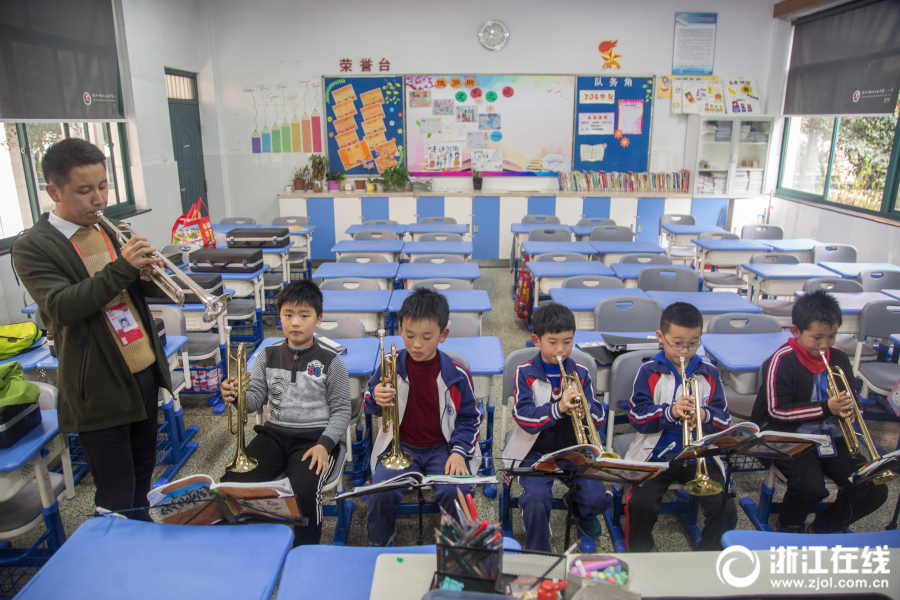【racing simulator cockpit with monitor stand】Tesla Cuts Prices as Model 3 Deliveries Miss Estimates
Tesla
(NASDAQ: TSLA)

said that it delivered 90,racing simulator cockpit with monitor stand700 vehicles in the fourth quarter of 2018, 8% more than in the third quarter and a new record for the company. But deliveries of its Model 3 sedan fell slightly short of Wall Street's consensus expectation, as reported by Bloomberg.

The company also announced that it has cut prices of all three of its models by $2,000. Between the price cut and the Model 3 deliveries miss, investors were unimpressed. Tesla's stock opened the first trading day of 2019 sharply lower.

A red Tesla Model 3 Performance, a high-performance electric compact luxury sedan.
Tesla said that deliveries of the Model 3 rose 13% in the fourth quarter. Image source: Tesla.
Tesla's fourth-quarter sales and production: The raw numbers
Vehicle
Q4 2018 deliveries
Change vs. Q3 2018
Model S
13,500
(6.7%)
Model X
14,050
6.5%
Model 3
63,150
13.1%
Data source: Tesla.
Tesla produced 61,394 Model 3's and a combined total of 25,161 Model S's and Model X's in the fourth quarter, up 15% and down 6.4% from the third quarter, respectively.
In addition to the totals delivered, another 1,010 Model 3's and 1,897 Model S and Model X vehicles were "in transit" as of the end of the fourth quarter, Tesla said. (This seems to be Tesla's way of disclosing inventory. The totals are down significantly from the end of the third quarter, when nearly 12,000 Teslas were "in transit.")
A black Tesla Model X, a 7-passenger luxury SUV.
Sales of Tesla's Model X SUV rose 6.5% in the fourth quarter. Image source: Tesla.
What Tesla said
In addition to the delivery and production figures, Tesla's press release included a few items of note:
Tesla pointed out that Q4 Model 3 deliveries were limited to "mid- and higher-priced variants," as the much-talked-about $35,000 Model 3 isn't yet in production. All deliveries went to customers in North America, and all were purchasers -- Tesla hasn't yet offered a leasing option on the Model 3.
Tesla said that it will begin delivering Model 3's to customers in Europe and China in February. Deliveries to other markets, including those requiring right-hand drive, will begin "later in 2019."
Although Tesla has repeatedly said that it has a long list of reservations for the Model 3, it said that more than 75% of Model 3 orders in the fourth quarter came from new customers, not reservation holders.
As mentioned above, Tesla has reduced the price of all U.S. models by $2,000.
What's that price cut about?
Why did Tesla feel the need to cut prices after a record quarter? I think there are a couple of explanations.
First, as Tesla noted in its press release, the U.S. federal tax credit available to Tesla buyers fell by half as of January 1, from $7,500 to $3,750. Under U.S. law, the electric-vehicle tax credits available to a manufacturer's customers
begin to phase out
two quarters after that manufacturer sells its 200,000th qualifying vehicle in the United States.
Story continues
Because Tesla
hit that number in July
, tax credits available to its U.S. customers are phasing out:
Americans who buy Teslas in the first half of 2019 get a tax credit of $3,750;
Buyers in the second half of 2019 will get a credit of $1,875;
Buyers after that get no federal tax credit.
That's the official reason for Tesla's price cuts. But there's almost certainly a second, related reason: Tesla is worried about demand -- worried enough that it felt the need to take a hit to its margins in order to partially offset the declining tax credit.
Why would Tesla worry about demand? There's a hint hidden in its press release -- that more than 75% of fourth-quarter orders for the Model 3 came from new customers. That suggests that a large portion of Tesla's much-touted backlog of reservations for the Model 3 hasn't yet converted into sales. It's possible that many or most of the remaining reservations are awaiting the promised $35,000 Model 3 variant, are from outside North America, or both.
It's also likely that Tesla, like just about every other automaker in the world, is reading the economic tea leaves, seeing a recession in the maybe-not-so-distant future -- and wants to keep sales strong for as long as possible.
What's next for Tesla?
We'll learn more about Tesla's fourth-quarter effort when the company reports its fourth-quarter and full-year 2018 earnings. Tesla hasn't yet announced the date for that report, but it's likely to happen in early February.
More From The Motley Fool
10 Best Stocks to Buy Today
3 Stocks That Are Absurdly Cheap Right Now
5 Warren Buffett Principles to Remember in a Volatile Stock Market
The $16,728 Social Security Bonus You Cannot Afford to Miss
The Must-Read Trump Quote on Social Security
10 Reasons Why I'm Selling All of My Apple Stock
John Rosevear
has no position in any of the stocks mentioned. The Motley Fool owns shares of and recommends Tesla. The Motley Fool has a
disclosure policy
.
View comments
(责任编辑:Leisure)
- ·XFC to Live Stream Inaugural Try-Outs in Michigan on Sept 12 Live on Location at Team SFS-Scorpion Fighting System
- ·Notification of Major Holdings
- ·INVESTOR ALERT: Kirby McInerney LLP Continues Investigation of Shareholder Claims Against Hallmark Financial Services Inc.
- ·Williams to Build 1-40 MW Solar Stations Across 9 US States (Revised)
- ·How Does TCF Financial's (NASDAQ:TCF) P/E Compare To Its Industry, After The Share Price Drop?
- ·FTC Sending More Than $470K to People Duped by My7Network, ‘Bitcoin Funding Team’ Scams
- ·Former Walmart CEO says coronavirus will challenge department stores
- ·Here's How Long It Took Amazon To Reach A $100B Market Cap
- ·Margaux Resources Announces Collaboration with GoldSpot Discoveries and Spring Work Program on Cassiar Gold Project
- ·Hydro66 Announces Additional Advance Under Convertible Loan
- ·NextEra Energy (NEE) Stock Moves -1.57%: What You Should Know
- ·HAGENS BERMAN, NATIONAL TRIAL ATTORNEYS, Urges Opera Limited (OPRA) Investors With Losses to Contact its Attorneys: Important Class Action Deadline Approaching
- ·AGI or RGLD: Which Is the Better Value Stock Right Now?
- ·35 Surprising Cities With Low Costs of Living
- ·Shift Announces Its Intention to Commence an Offer to Exchange Its Publicly Traded Warrants
- ·Coronavirus slows, but doesn't stop real estate lending: Report
- ·Aptose to Hold Corporate Update Sunday, December 6th
- ·Lam Research (LRCX) Stock Moves -1.58%: What You Should Know
- ·AstraZeneca's COVID-19 Vaccine Trial Delays May Worsen As FDA Widens Investigation
- ·Bitcoin Falls 11% In Bearish Trade





![5%, led by a 17% increase in average ticket and a slight decline in traffic. Growth in the quarter reflected the impact of households stocking up on essentials like paper goods and cleaning supplies as the pandemic became a nationwide concern, along with strength in discretionary categories as the quarter came to a close and stimulus dollars and tax refunds were disbursed.</p><br><p>As shown below, the results in the quarter materially changed the trend in two-year stacked comps for each of the banners, along with a significant acceleration for consolidated comps.</p><br><p>The increase in consolidated comps was the primary driver of an 8% increase in revenues to $6.3 billion. The company ended the quarter with 15,370 locations, up less than 1% year-over-year. This reflects a 7% increase in Dollar Tree units, offset by a 4% decline in Family Dollar units.</p><br><p>The top-line results at each banner flowed through to their respective income statements, with Dollar Tree gross margins and operating margins declining year-over-year while Family Dollar gross margins and operating margins expanded year-over-year. On a consolidated basis, gross margins contracted by 120 basis points in the quarter to 28.5%, reflective of a shift to lower-margin consumables, tariff costs and the impact of markdowns from the Easter headwinds at the Dollar Tree banner. The company saw slight operating leverage on SG&A from higher comps, with the net result being an 80 basis point contraction in operating margins to 5.8%, with operating income declining 5% to $366 million. This is not adjusted for $73 million of pandemic-related costs, such as PPE supplies.</p><br><p>In the first quarter, the company opened 85 stores (net of closures) and completed 220 Family Dollar renovations to the H2 format. Importantly, comps at renovated Family Dollar stores continue to outpace the chain average by more than 10%. On the call, management indicated that they plan on reducing both the number of new store openings (from 550 to 500) and the number of H2 renovations (from 1,250 to 750) in 2020.</p><br><p>Personally, given the fact that Family Dollar is seeing material benefits to its business from the pandemic with new or lapsed customers coming into its stores, I think the company should try to get more aggressive with its renovation plans, not less. On the other hand, you could argue that renovations cause short-term disruptions and limit their ability to fully capitalize on the business momentum they are currently experiencing.</p><br><p>As a result of fewer new stores and remodels, management now expects 2020 capital expenditures to total $1.0 billion compared to previous guidance of $1.2 billion. In addition, the company has temporarily suspended share repurchases. At quarter's end, the company had $1.8 billion in cash on its balance sheet compared to $4.3 billion in total debt.</p><br><p>Conclusion</p><br><p>In recent years, Dollar Tree has been a tale of two cities. While its namesake banner has generally delivered impressive financial results, Family Dollar has been a persistent underperformer. This quarter, those results flipped, and given what we've seen in the weeks since quarter's end, there's a decent possibility that we will see something similar in the coming months. As the CEO noted, the second quarter is off to a very good start at Family Dollar.</p><br><p>Here's the important question: how useful is that information is in terms of making future predictions about the business? Will recent success at Family Dollar translate into long-term success for the banner? The optimistic take is that new or lapsed customers, especially those visiting the renovated stores, could become recurring business for the banner. The pessimistic take is that they have experienced short-term success out of necessity as people went to any store that was open to try and find essentials like toilet paper and hand sanitizer that were largely out of stock throughout the retail landscape. From that view, many of these customers could abandon the retailer when life returns to normal. As Philbin noted on the conference call, early on [during the pandemic], folks needed us. Will people still shop as much at Family Dollar when it's no longer a necessity?</p><br><p>Personally, I do not place too much weight on the recent results. I will need to see incremental data points that indicate that Family Dollar has truly won sustained business from these new customers. While I still believe that the Dollar Tree banner is a well-positioned retailer with attractive unit returns, I'm not yet willing to say the same thing for Family Dollar. For that reason, along with the recent run-up in the stock price, I plan on staying on the sidelines for now.</p><br><p>Disclosure: None</p><br><p>Read more here:</p><br><p>Under Armour: A Tough Start to 2020</p><br><p>Walmart: Continued Omni-Channel Progress</p><br><p>Match: An Impressive Start to 2020</p><br><p>Not a Premium Member of GuruFocus? Sign up for a free 7-day trial here.</p><br><p>This article first appeared on</p><br><p>GuruFocus</p><br><p>.</p><br><p>Warning! GuruFocus has detected 4 Warning Signs with DLTR. Click here to check it out.</p><br><p>DLTR 30-Year Financial Data</p><br><p>The intrinsic value of DLTR</p><br><p>Peter Lynch Chart of DLTR</p><br><p>View comments</p><br>](http://n.sinaimg.cn/translate/w800h450/20180311/204C-fxpwyhw9109025.jpg?zdy)








